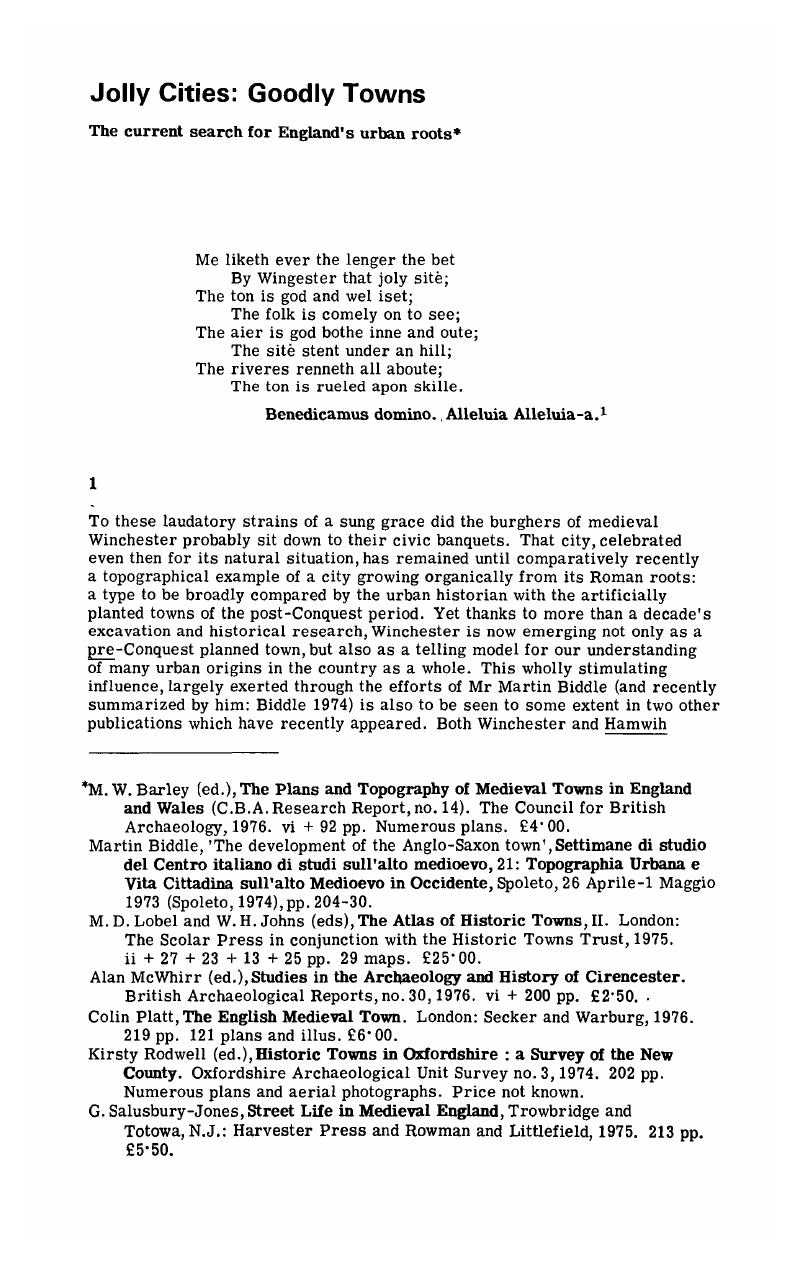No CrossRef data available.
Published online by Cambridge University Press: 09 February 2009

1. Sidgwick, Frank and Chambers, E. K. (eds), Early English Lyrics (1907), 256, 378.Google Scholar
2. Lobel, M. D., ‘Hereford’, p. 3Google Scholar and map 2 in Historic Towns Atlas, I, ed.M. D. Lobel.
3. Shoesmith, R., The City of Hereford: Archaeology and Development, published by WEMRAC, distributed by RESCUE (1974)Google Scholar, first map; cf. p. 22.
4. Beresford, Maurice and Finberg, H. P. R., English Medieval Boroughs: a handlist (1973), 36, 39Google Scholar; Beresford, Maurice, New Towns of the Middle Ages (1967), 330, 303Google Scholar, cf. Barley ed.,32,48.
5. Whitelock, Dorothy (ed.), English Historical Documents c. 500–1042 (1968), 371Google Scholar, Ine 70. 1.
6. Stenton, F. M., Anglo-Saxon England (2nd edn, 1947), 301Google Scholar; H. M. Chadwick, Studies on Anglo-Saxon Institutions (New York, 1963), 341–2.
7. Round, J. H., Feudal England (1964), 97–9.Google Scholar
8. Urban History Yearbook 1975, 154 on Lovell, Hilda, ‘Axbridge, Somerset: history of a Domesday borough with special reference to the development of local government’ (M.Phil, thesis, University of London, 1971).Google Scholar
9. Loyn, H. R., Anglo-Saxon England and the Norman Conquest (1962), 120.Google Scholar
10. Everitt, Alan, ‘The Banburys of England’, Urban History Yearbook 1974, 30–5.CrossRefGoogle Scholar
11. Whitelock, op.cit., 378.
12. Ibid.,391, 416, 438.
13. Ibid., 399.
14. Tait, J., The Medieval English Borough (1936), 20–1Google Scholar; Stenton, op.cit., 521–2.
15. Cf. plans in Biddle, Martin and Hill, David, ‘Late Saxon planned towns’, Antiquaries Journal, li (1971), 72, 79–80.Google Scholar
16. Stephenson, Carl, Borough and Town (Cambridge Mass:, 1933), 221.Google Scholar
17. This represents a possible re-interpretation of the evidence presented in Slade, C. F., ‘Reading’, pp. 2–5Google Scholar, in History Towns Atlas, I, ed. M. D. Lobel.